Yes, you can mix wood and white trim in the same house (or, even, in the same room)! Mixing painted and stained trim is completely doable, as long as you keep these tips in mind.
Our modern cottage home has original solid wood trim, crown molding, panel molding, chair rails, and ceiling beams… but… it’s only like that in a few of the main rooms. The remaining spaces are filled with the same 3″ stained baseboards that fills most homes built in the 1980s.
So, what do you do when some of your home’s trim is high quality and the rest is builder grade? Does it all have to be upgraded ($$$)? Or, do you have to paint it all white (bye-bye beautifully stained original wood)?
Is it all or nothing?
The answer is a resounding “no”.
Not only can you mix wood and white trim, you can also mix stained trim with painted trim of any color. Mixing trim is not as easy as “all or nothing”, but the results are well worth the extra effort (and, it might save you some money, too!).
How to Combine Stained and Painted Trim
1. Decide which Trim will be Stained
First, determine which trim, moldings, and casings will remain in a stained finish (i.e. will not be painted). To make this decision, ask yourself the following questions:
- Do I like this feature of my home in a stained finish?
- Is this trim made with quality wood?
- Does this trim make a statement in my home?
- Is this trim in good condition?
- Does this stained trim work with the “mood” I’d like to create in this room?
Save Your Favorite Ideas & Get Updates
- Save your favorite content (from my site and thousands of other sites including: home, DIY, craft, recipe, and travel blogs)
- Receive my weekly newsletter
- Gain access to my Freebie Library
2. Decide which Trim will be Painted
Next, determine which trim, moldings, and casings will be painted. To make this decision, ask yourself the following questions:
- Which wood-stained features do I dislike?
- Is this trim made with inexpensive wood?
- Does this trim distract from other appealing features of my home?
- Is this trim in poor condition?
3. Determine the Start and Endpoints
The trickiest part of mixing stained and painted trim is the start and endpoints. What do I mean by start and endpoints? Well, for example, this question:
“If I paint the baseboards white, should I also paint the stained door casing which opens to the next room?”
This isn’t always easy to solve. In fact, in several rooms, I have painted trim up to a certain point and then stopped to mull it over for a while. I’m a visual person, and seeing it in real life helps me make the final decision.
My general rule regarding where to start and to end is this: keep each type of trim consistent within a room (with the exception of window and door casing trim). For example:
- all baseboard in a room is the same color,
- all crown in a room the same color,
- etc.
4. Decide whether each Window Casing will be Painted or Stained
So, do the window casings have to match the crown molding… or the baseboards… or the other windows in the room? Nope!
Rather, for window casing trim, choose stained or painted based on the following criteria:
- if you want windows to feel bigger, choose a low contrast trim color (see image #1, below)
- if you want to highlight windows, choose a high contrast trim color (see image #2, below)
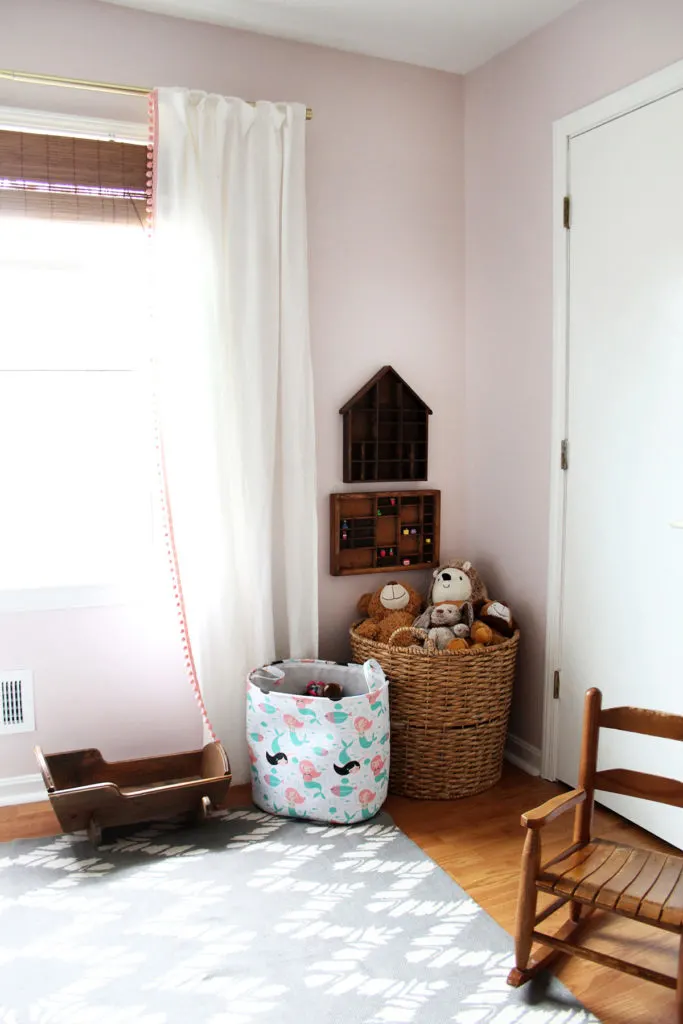

5. Decide whether each Door Casing will be Painted or Stained
Like window casings, door casing trim can also vary within a room.
For door casing trim, choose stained or painted based on the look you want AND the impact on the adjoining room, for example:
- if there is a door, you can finish it in one color to the stop in the door frame and another color past that point (see image #1, below)
- if a cased opening does not contain a door (i.e. a pass-through), paint it all or stain it all based on which is most visually appealing (see images #2 and #3, below)
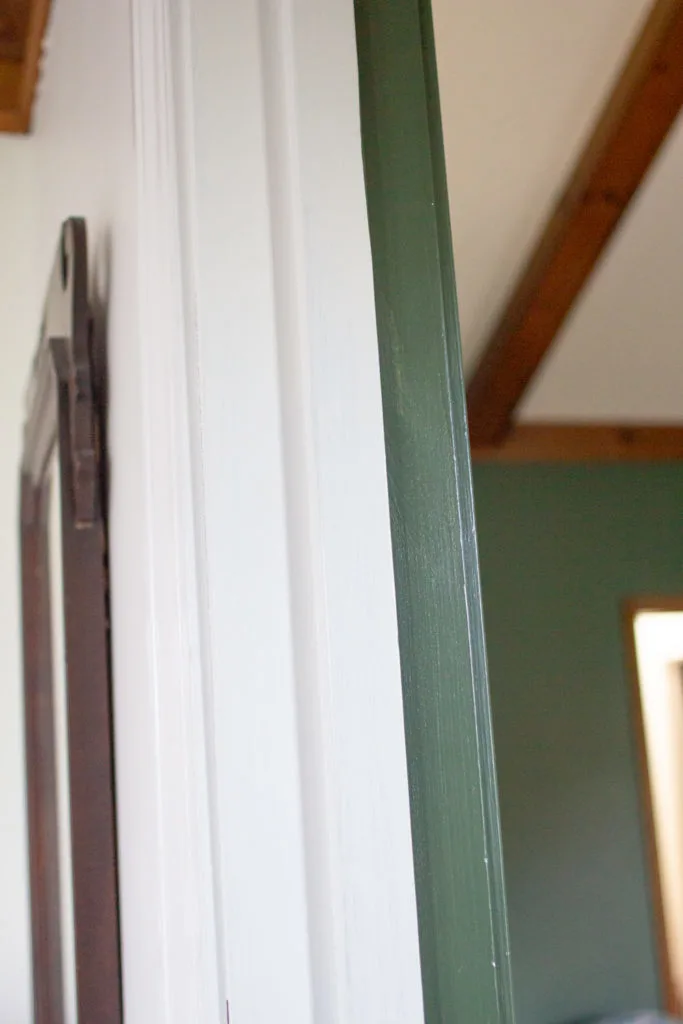
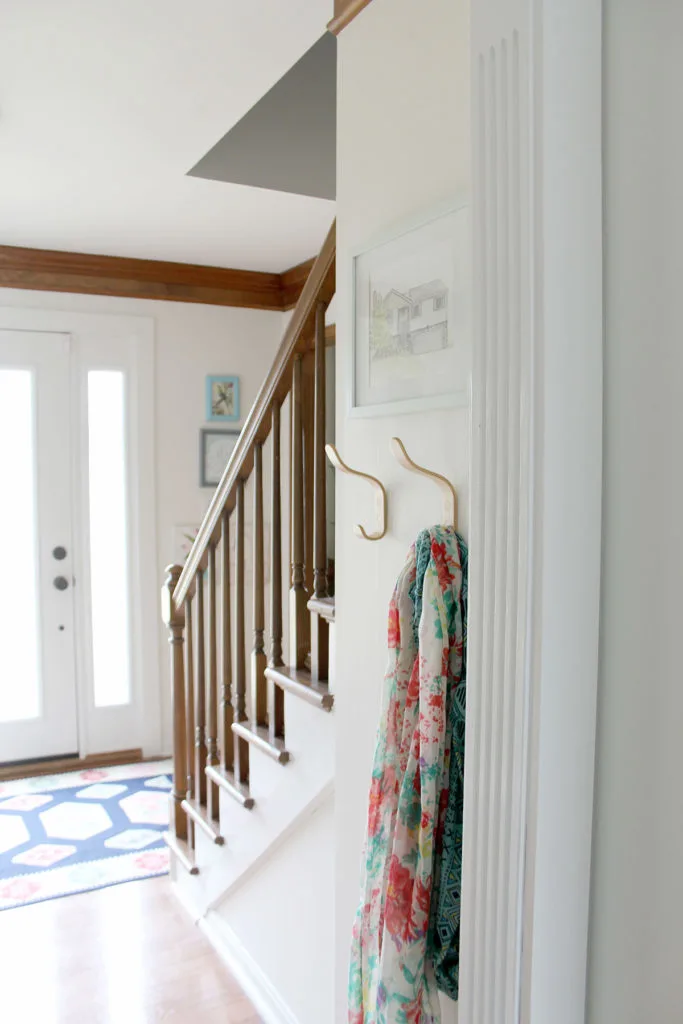
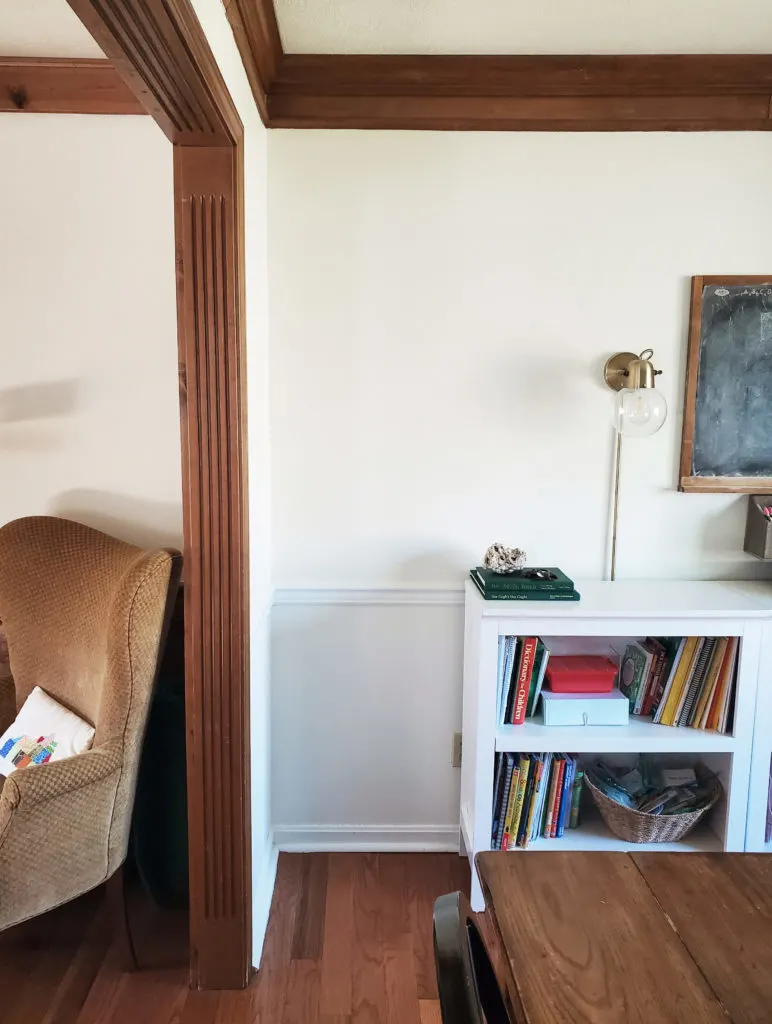
6. Decide whether Doors will be Painted or Stained
If you have a door between rooms, you’ll have to decide whether the door will be stained or painted to match the trim. Just like all trim doesn’t have to match, doors don’t always have to match the trim, either.
In general, you have 4 choices:
- painted door with painted trim
- stained door with painted trim
- stained door with stained trim
- stained door on one side, painted door on the other side
Typically, I don’t recommend the last option. In this post about How to Mix Wood Stained Doors with White Trim, I explain how to decide between the other 3 options.
Examples of Mixing Wood and Painted Trim
Dining Room with Wood and White Trim
For the first example, let’s take a look at our homeschool room (also a dining room). I wanted the room to feel light and bright… after all light is imperative in a space for schoolwork.
When we moved in, the crown molding, window trim, chair rail, and baseboards were all stained wood. All that wood trim – combined with blue-gray walls – wasn’t adding up to the light and bright space I envisioned.
But, I hated to paint over that gorgeous, thick, stained wood crown molding. How could I lighten up the room without hiding a feature that I loved?
You might also like: How to Brighten a Dark Room
So, I decided to try mixing wood and white trim in the same room (prior to this, I’d only mixed it in the same house). We painted the walls in SW Alabaster and the trim in SW Pure White (to match the adjoining budget-friendly kitchen renovation).
It turned out exactly as I’d hoped! The beautiful crown molding is highlighted because all of the smaller 3″ trim blends in with the walls.
Bedroom with Stained and Painted Trim
For the next example, let’s take a look at our master bedroom. We wanted this room to feel cozy, warm, and a bit rustic. It’s a big room that can handle a deep, dark, paint color and heavy trim.
Plus, the wood beams are the statement piece in this room and I definitely wouldn’t want them to fade away with white paint.
However, I wasn’t interested in updating the inexpensive baseboards with similar trim to match the ceiling. It would be expensive and difficult to match the stains.
Instead, we chose to replace the 3″ baseboards with paintable 1″ x 6″ boards. I painted the boards with SW Rookwood Dark Green (at 50%) – to match the dark green bedroom walls – which keeps the base trim from competing visually with the ceiling beams and trim.
Plus, I love how the dark green trim contrasts with the grasscloth-covered wall, while also complementing the green curtains (here are 9 more examples of rooms with painted green trim).
Tips & Tricks for Painting Stained Trim
- Use a high-quality semigloss paint, preferably with primer built-in. I like Sherwin William’s Emerald Urethane Trim Paint for both trim and cabinetry.
- If your home is older (pre-1978), there is a possibility that there could be lead in the stain, varnish, or original paint. You can buy a lead test kit to confirm the existence of lead. Then, use a lead encapsulating paint as a primer/barrier before painting the trim.
Mix Wood and Painted Trim
Now it’s your turn! Embrace the stained trim in your home by making creative choices with trim color.
Have questions? Feel stuck? Leave a comment, below. I’d love to help you figure out how to beautifully combine stained and painted trim in your home!

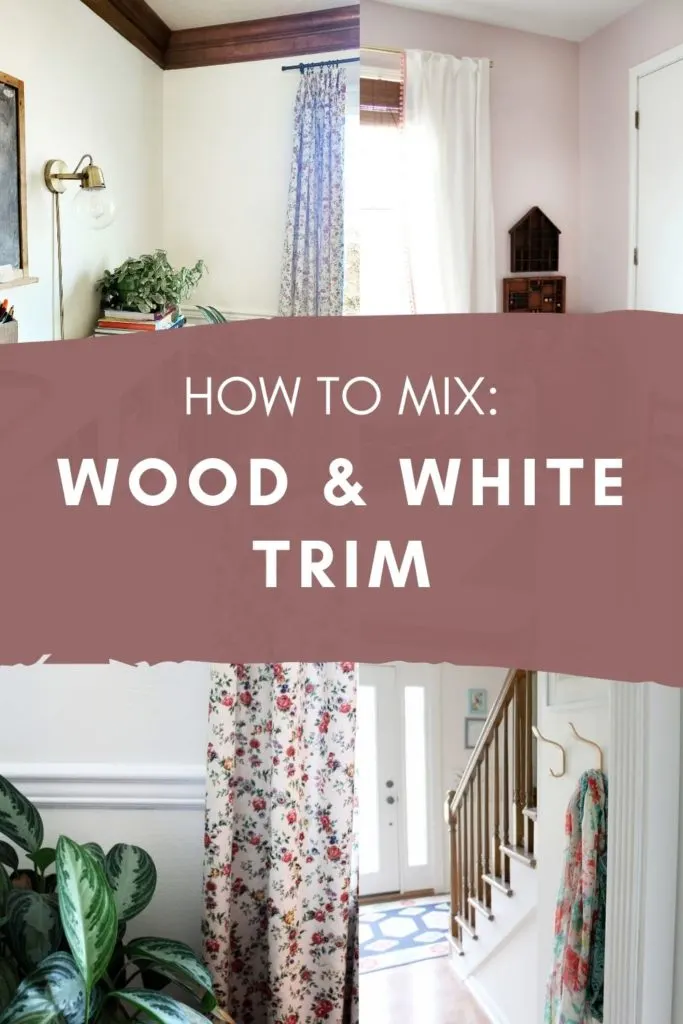
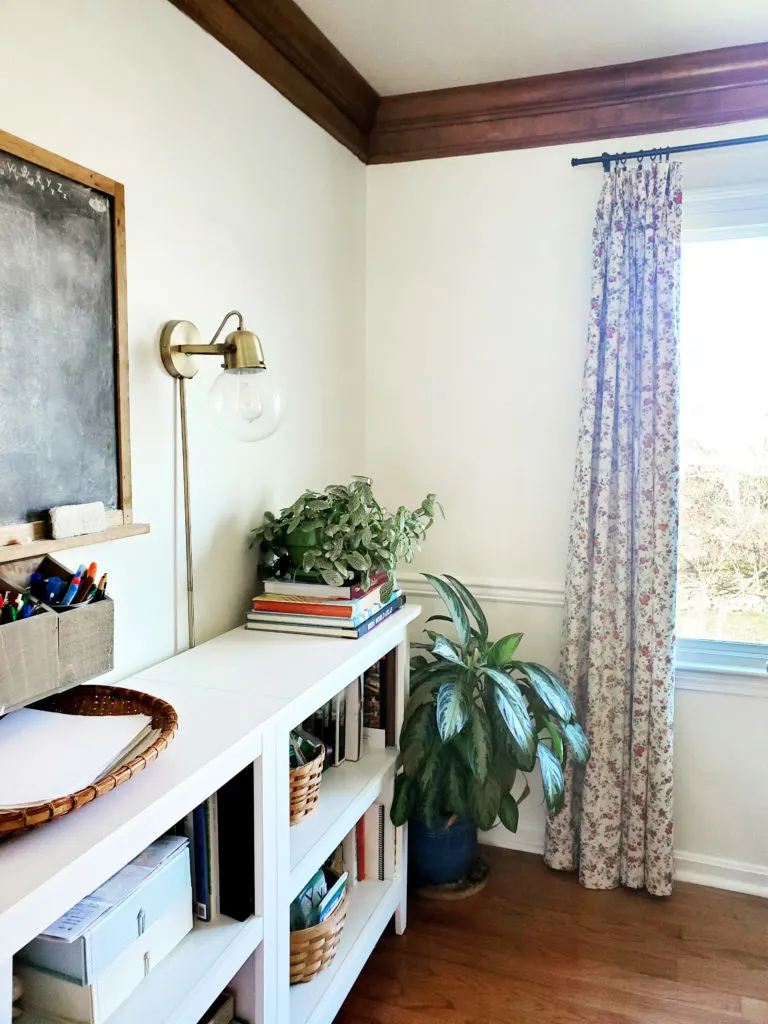
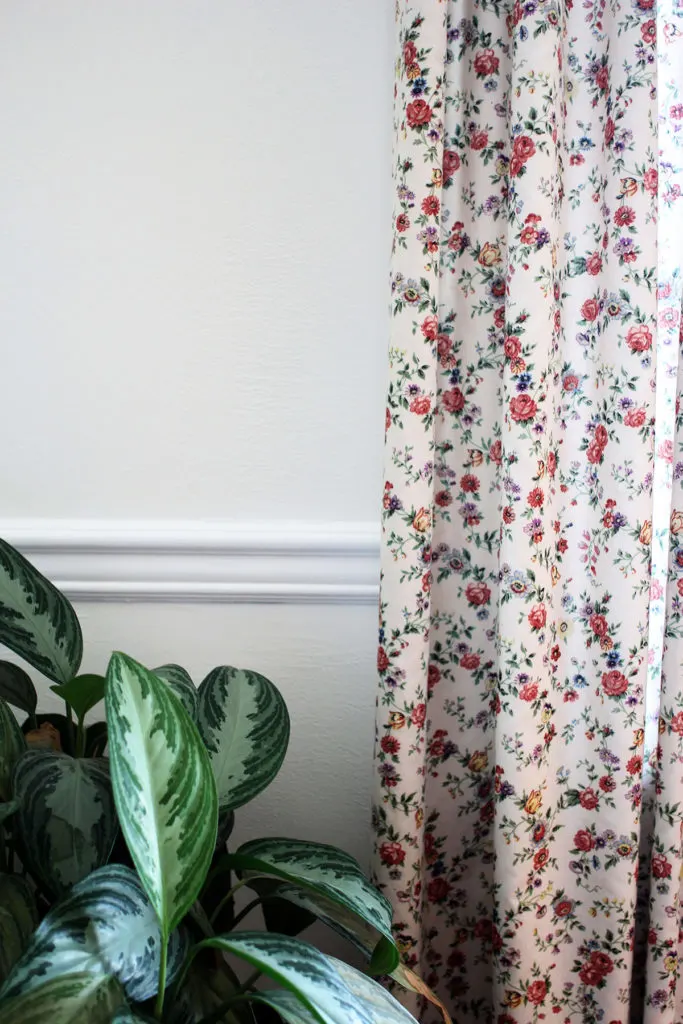

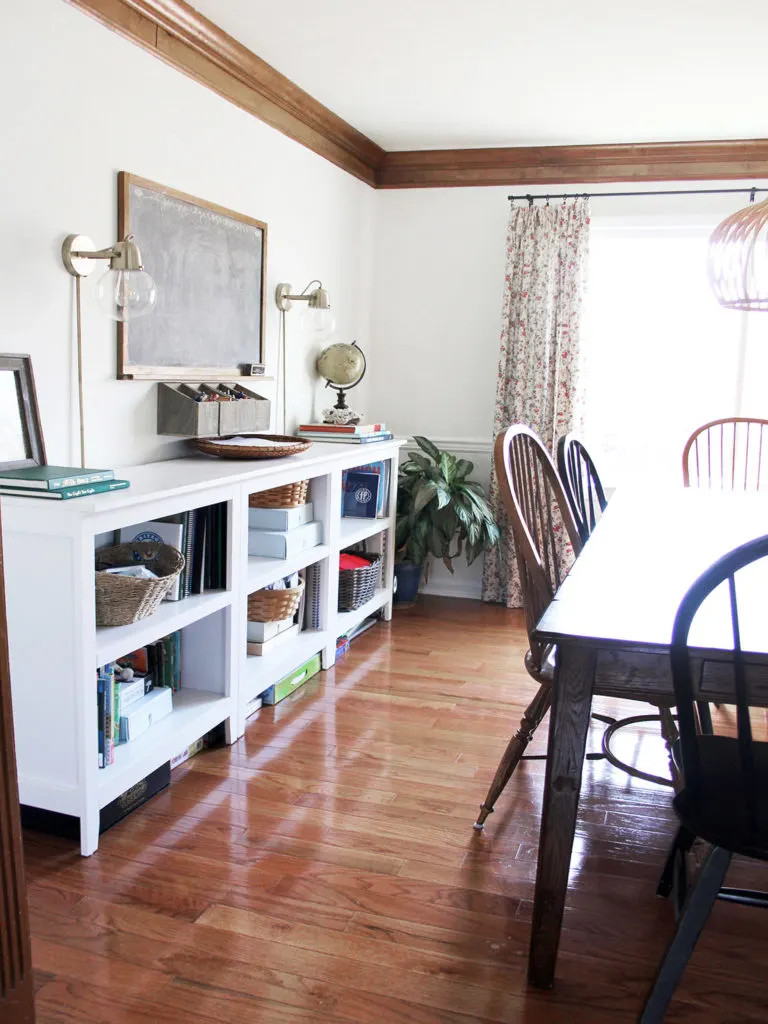
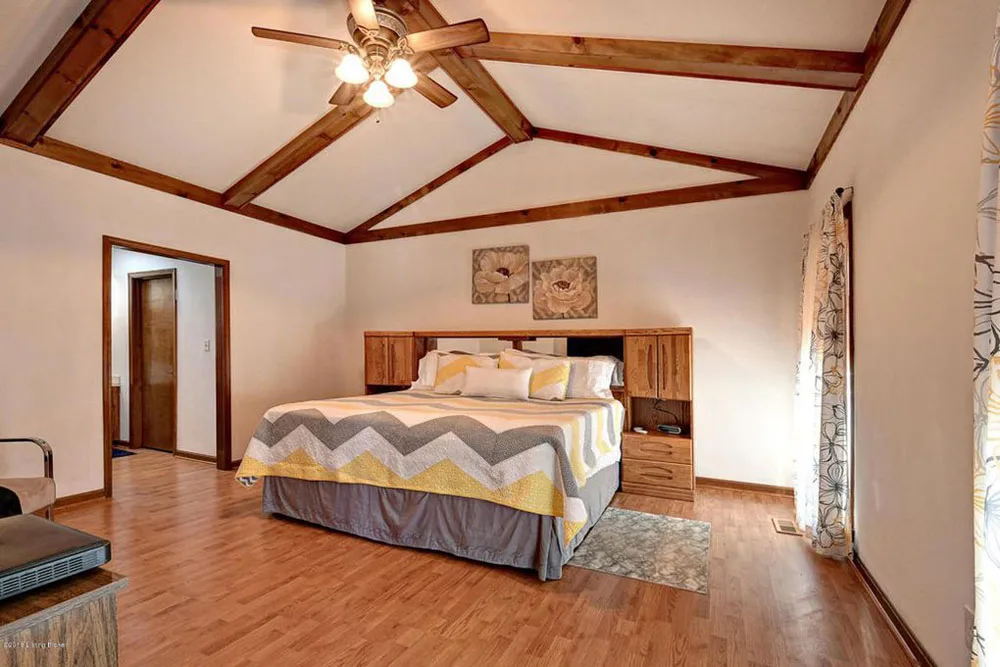
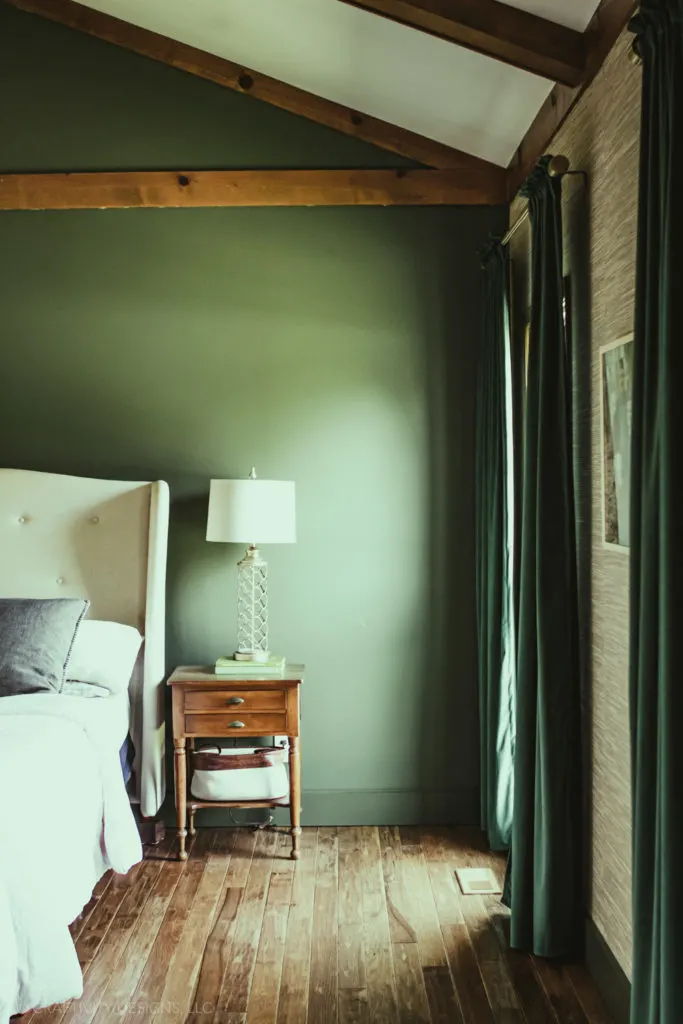
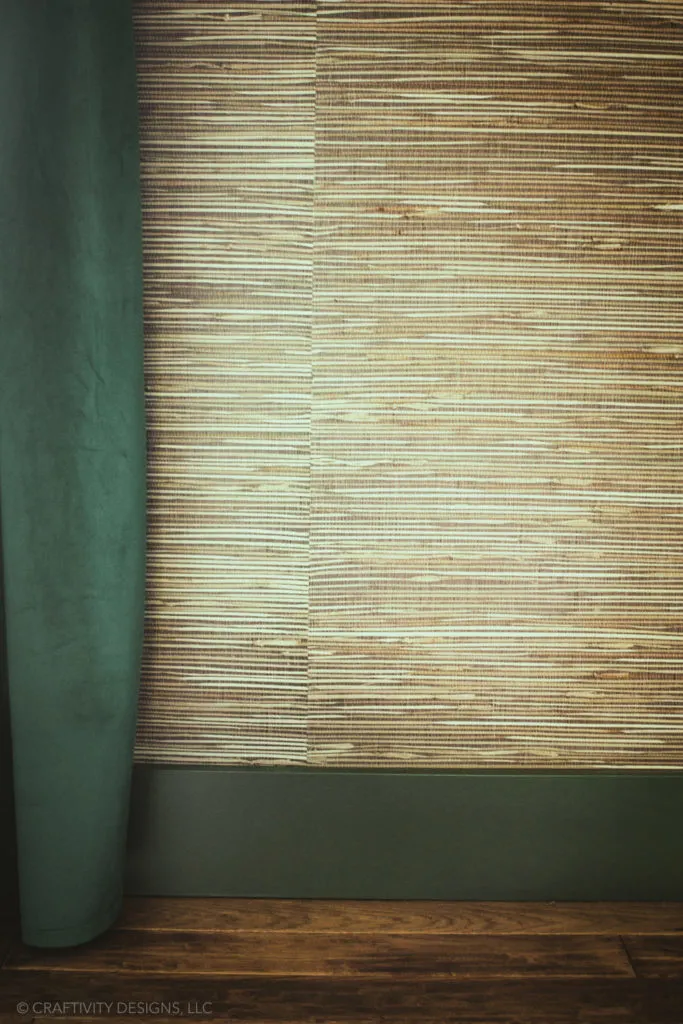

Rachel
Saturday 16th of August 2025
We just moved into a 100+-year-old house. Most of the original wood trim has been painted white, with the exception of the dining room. The dining room isn’t large, and with the chair rail, baseboards, built-in cabinet, windows, and doorframes all in dark-stained wood, it just feels heavy and dark, despite the many windows. Originally, I was going to paint all the trim white and install wainscoting underneath the chair rail; there would be white-painted wainscoting below the white chair rail and a darker blue wall above. But since moving in I’ve come to appreciate the old natural trim (plus, I’m so sick of painting). Is there a way to put some color in there without making it seem imposing and heavy? Could I split the walls, with a dark color underneath the chair rail, almost-white above? Or would it seem strange to have two colors with only the wood trim chair rail in the middle? I could just suck it up and paint the chair rail and baseboards white, leaving the windows and door frames natural, but it’s so much work to sand the trim, prime, and repaint. And I worry that will accentuate the small door openings and make it feel like a rabbit warren. Thoughts?
Lora Green
Sunday 24th of August 2025
I think if you went with a dark color on the bottom, that would blend the chair rail into the paint to some extent (visually I mean, not that they are the same exact color). Then you could go white on top. Another option would be to paint the walls and chair rail white, but leave everything else stained. This is somewhat similar to my dining room, where I didn't want to remove the chair rail due to damaging the walls but also liked the crown moulding, you would just be leaving the base trim stained, too). A third option would be to do a light patterned wallpaper below the chair rail and a white or light paint above the chair rail to match the wallpaper. That would feel intentional with the chair rail as the "frame" for the wallpaper but still matching above the chair rail - and it would be light and bright.
Carol wolflsau
Saturday 26th of July 2025
Hello, our interior doors are all white craftsman. We will be changing out the trim around these doors with a better molding on top. We replaced our windows in our great room...one wall of windows which were/are encased in stained wood which i would like to keep but a more substantial dramatic wood encased around all the windows. Question is we have two doors to a wrap around porch...one entry and one side door with 6 panel windows. We are planning on staining them but is it OK to encase these exterior doors in stained wood. We hope to get taller baseboards and paint them white, as well. Thank you.
Lora Green
Sunday 24th of August 2025
Yes, I think that sounds quite lovely considering you already have some stained wood you are keeping around the windows.
Kerry
Friday 11th of April 2025
Hi I have mahogany stained skirting boards, door jams and window frames and returns. However we just had 2 windows replaced and they have put white returns on them. It honestly looks awful. The windows are Blane framed aluminium. I was going to paint the skirting boards the wall colour but do I have paint the window frames and returns the same colour as the walls now and would that look nice or clash with stained door jams?
Lora Green
Sunday 13th of July 2025
Hi Kerry! I'm so sorry, I missed this comment. I'd be inclined to paint the window frame/returns to match the wall color, too, since they aren't the mahogany anyway.
Jeanne
Tuesday 25th of March 2025
I have an old pass through that has been drywall’s on one side. I want to put a wider shelf on the bottom with two more narrow shelves above( these two would be the width of the wood work surrounding the pass through). All the wood work in the house is stained medium oak. I would like this new shelf to be painted a lighter color on an accent wall instead of being stained medium oak. Would that look ok ?
Lora Green
Monday 7th of April 2025
Yes, definitely! Painting a shelf to mix with with the stained woodwork is a great way to mix painted/stained wood seamlessly!
Vicki Briggs
Tuesday 24th of December 2024
We have natural wood barn doors and floor tim to match...floor is a dark grey/brown that looks like old boards...thinking of painting window sills charcoal...walls are white..im going to paint exterior of the hoyse charcoal and front door black..whats your thoughts?
Lora Green
Tuesday 7th of January 2025
That sounds lovely!! I'd love to see before and after pics, if you want to share :)